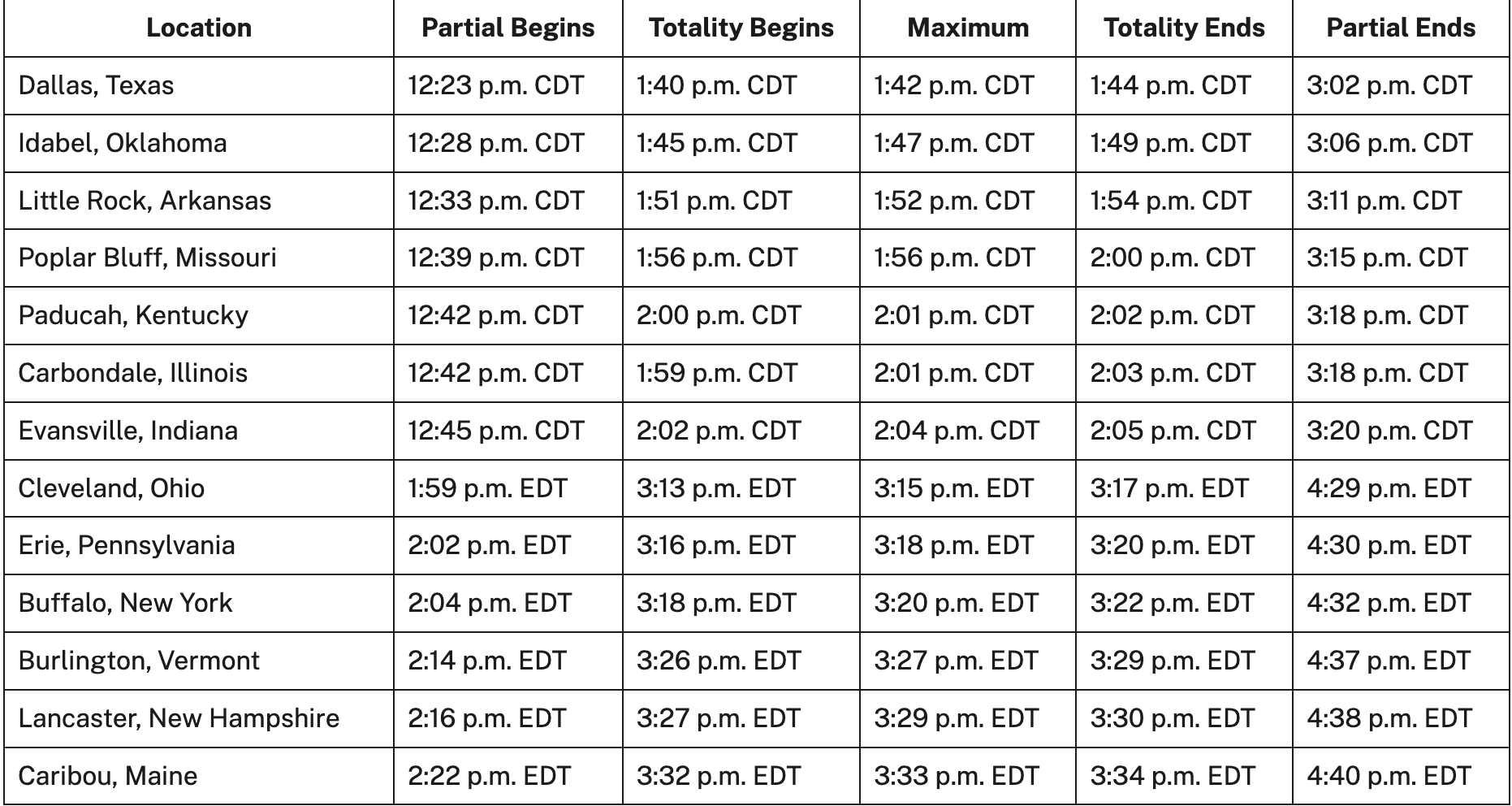A total solar eclipse will darken U.S. skies on April 8, 2024. Here's what to know about the rare event.
Excitement is growing across the U.S. as a long-awaited total solar eclipse finally arrives today. Here's where you can see the April 8 solar eclipse and how and when to watch it.
When is the total solar eclipse?
The 2024 total solar eclipse begins on Mexico's Pacific Coast at around 11:07 a.m. PDT, on Monday, April 8. It then travels across parts of the U.S, sweeping through more than a dozen states in the "path of totality," and into Canada before leaving continental North America in the late afternoon.
A solar eclipse occurs when the moon passes between the sun and Earth, blocking the sun's light. When the moon blocks some of the sun, it's a partial solar eclipse, but when moon lines up fully with the sun, blocking all of its light, a total solar eclipse occurs, NASA says.
During a total solar eclipse, the moon casts a shadow on Earth as our planet rotates. This is called the path of totality — where the total solar eclipse is visible.
After the April 8 total solar eclipse this year, the next total solar eclipse visible from the U.S. will occur on Aug. 23, 2044. The last total solar eclipse was visible from the U.S. happened in August 2017 — it was the first total eclipse to pass over the entire continent in nearly 100 years.
An annular solar eclipse was visible for parts of the U.S. on Oct. 14, 2023, but the sun wasn't totally covered.
Where will the total solar eclipse be visible?
About 31.6 million people live in the path of totality — the path where the total solar eclipse will be visible, according to NASA. For the 2017 eclipse, an estimated 12 million people were in areas that saw the total solar eclipse.
After passing over Mexico in the early afternoon, southern Texas will see the full total eclipse starting around 12:10 p.m. local time. Parts of Oklahoma and Arkansas soon follow.
The total eclipse will reach Illinois, Kentucky and Indiana around 2 p.m. and Ohio around 3:15 p.m.
Parts of Pennsylvania will then start to see the total eclipse around 3 p.m. and parts of New York will see it shortly after.
It will then move over parts of Vermont, New Hampshire and Maine before getting to Canada around 4:25 p.m.
Map of total solar eclipse path
NASA has created a map that shows the path of the eclipse from Mexico across more than a dozen U.S. states and into northeast Canada.
The eclipse will begin at around 11:07 a.m. PDT. It will then travel to the northeast across parts of the U.S. and into Canada. It will leave continental North America from Newfoundland at 5:19 p.m. local time.
How can you safely watch the solar eclipse?
When the sun is partially covered by the moon, it is important to use protective eclipse glasses to avoid eye injury. Only when the sun is fully covered is it OK to look at it with your eyes, but parts of the sun will be visible before and after the eclipse reaches its brief totality.
Eclipse glasses are not sunglasses — they are a thousand times darker and must comply with the ISO 12312-2 international safety standard, according to NASA. The American Astronomical Society has a list of approved solar viewers.
NASA also warns that you should not look at the eclipse through a camera lens, binoculars or telescope, even while wearing eclipse glasses. The solar rays can burn through the lens and cause serious eye injury.
There are also indirect ways to view the eclipse like through a homemade pinhole projector.
How to watch the eclipse on TV and livestream
If you're not in the path of the eclipse — or if the weather doesn't cooperate — you can watch live coverage on CBS television stations, CBSNews.com and streaming live on the CBS News app on your mobile or streaming device beginning at 2 p.m. ET on Monday, April 8. 2024.






